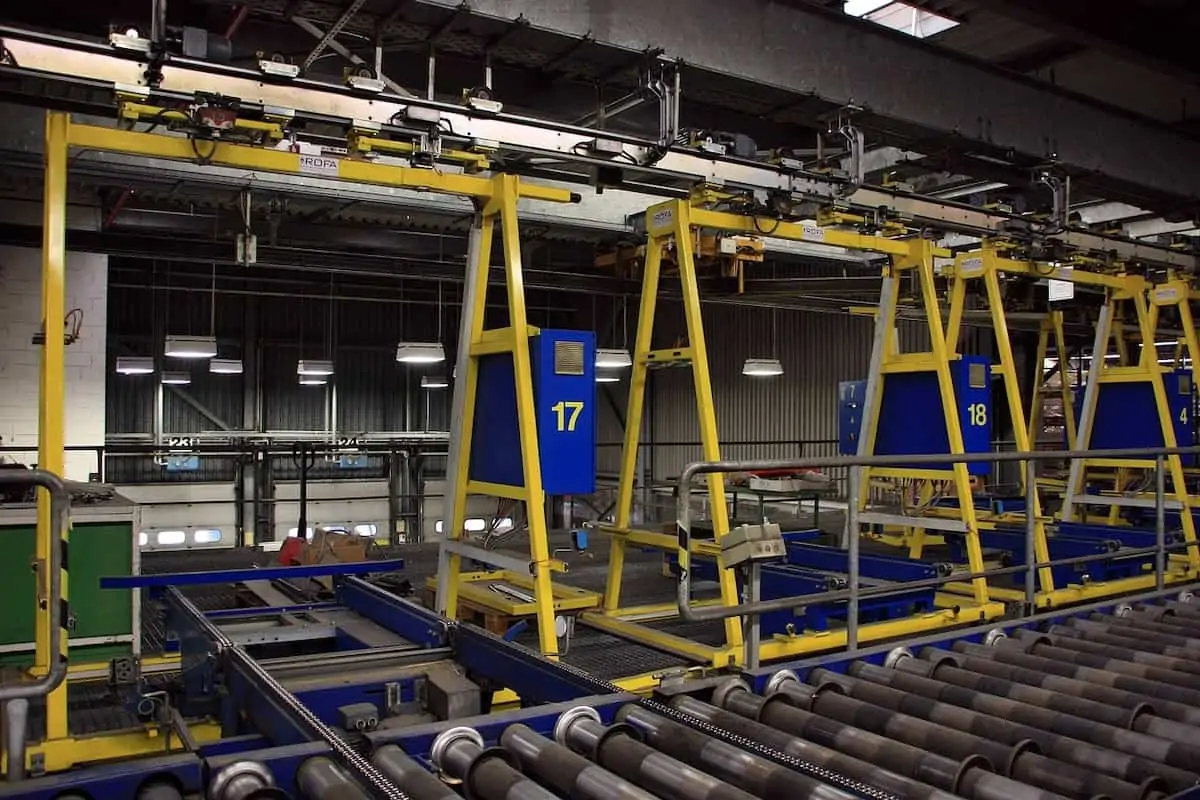Anyone who owns or operates a warehouse knows that running one is no easy task. From product transportation and storage to material handling to a conveyor system, a lot goes into keeping a warehouse operating like a well-oiled machine.
However, in the midst of managing all the various moving parts, many businesses overlook one important detail, which is how the packages and products will be transported within the warehouse.
The most obvious answer here is a conveyor belt system that warehouses often opt for, allowing them to easily move goods within the depository.
However, there are many things to consider before selecting a conveyor system for your setup.
What is a Conveyor System?
Before looking at the selection criteria, it is important to know the basics of a conveyor system.
In essence, a transportation/mechanical handling system that can move goods all around the facility and to nearby warehouses if required can be called a conveyor system. Generally used for transporting heavy wares, they can be operated in a variety of ways.
One of the most common types are the incline conveyor systems, which use elevation to move objects around the facility, either using gravity or through motorized assistance.
Incline conveyors can be further classified into vertical conveyors, spiral conveyors and Hytrol SBI and RBI conveyors. While the former two systems use a platform to move goods, the latter is a floor-to-floor system that is operated at a slight incline. These types of conveyors generally work in tandem with decline conveyors..
Now, it’s time to look at different factors to keep in mind before opting for one or more conveyor systems for your warehouse.
6 criteria to consider before selection of warehouse conveyor system
1. Prioritize Stock Item
It might be a no-brainer to many but stock product is an essential factor that should influence the type of conveyors you choose. The main item you are stocking in your warehouse should be the primary consideration while selecting a conveyor system.
While most warehouses store a plethora of goods, they specialize in storing and transporting one type of merchandise. Thus, the robustness of the goods needs to be taken into account before purchasing a conveyor system.
For example, if you are storing fragile products in your warehouse, then the conveyor can’t be inclined at a steep angle due to the risk of goods being damaged. The fragility may also determine the belt speed of the system.
In an ideal scenario, you should try to strike a fine balance between quality of transportation and versatility of products being moved within the facility. Even if fragile items might be your forte, you might need to move other kinds of goods too from time to time. Hence, one must ensure to select a system that ideally accommodates all these goods.
2. Consider Product Specifications
While taking stock of your items, it is crucial to know their dimensions as well as their weight, for that will also determine the nature of your conveyor system. One great example of this scenario is the roller conveyor, where, depending on the weight of the goods, the gauge of the roller can be determined.
Moreover, if you store and transport different materials with very different properties, then one type of conveyor system may not be the best fit for you. In such scenarios, consider integrating a variety of conveyor belt systems that can work in tandem.
3. Take Warehouse Specifications Into Account
Another aspect of planning is to consider your warehouse’s environment. Is the place hot, cold, humid, damp or dusty? Ultimately, all these conditions will have a different kind of impact on the goods and in turn, the conveyor system. Thus, don’t forget to factor them into your equation.
Lastly, since the transportation system will span a major part of your warehouse, it is crucial to consider the layout of your property. The transportation system will twist, bend, rise, dip or stay even according to the shape and dimensions of your storage unit so that the goods can be transported as quickly as possible without compromising on material handling.
4. Plan for Long Term Goals
Apart from product and warehouse specifications, another key factor to consider is the long term goals of your company. It is great to have a system that can effectively handle your current workload, but what about the future, where you might plan to expand?
Due to the large dimensions of conveyor systems, it can be difficult to modify them at a later date. Not only do they occupy a lot of space, but they can also block important parts of the warehouse, which might become a problem at a later date. To prevent this, take the future expansion of your business into account.
To get the job done, install a smaller conveyor system that can be easily updated or modified if the need arises. Sometimes, the warehouse itself might be expanded to accommodate more goods. Be prepared to factor this into your designs.
5. Keep in Mind The Process And Demands of Operation
With the pre-installation requirements and long term goals taken care of, it’s time to see how the conveyors will affect your current operation.
While the nature of goods being transported is a major consideration, it is also vital to see how long the conveyors will function during the day. Depending on this factor, the operating cost of your business and the daily load on the conveyor system will vary drastically.
For example, if you are using a motorized conveyor system requiring precision conveyor control for your warehouse, then try and avoid frequent starting and stopping of the motor as it will negatively impact efficiency of the conveyors. If this can’t be avoided, then you must consider using a strong, powerful motor for this operation, which will further shoot up your installation cost.
Conversely, if you can operate using a gravity-controlled conveyor system, then it will significantly lower your operating cost and maintenance as well as energy expenditure. Depending on the volume of goods being transported in your warehouse daily, the belt speed and layout of the system will be decided to maximise productivity.
6. Talk To Professional System Integrators
At the end of the day, you are a business owner and not a handling expert. Even after considering all these criteria, you might miss out on some important details that might come back to haunt you. To avoid that, it is wise to seek professional help.
For the best results, consult qualified system integrators and material handling experts, who can not only help you determine the best conveyor design, but they can also make sure that it makes your current operation as efficient as possible without compromising future expansion plans.
With your basic knowledge, you can help the experts to better strategize a cost-effective, robust and high-quality conveyor system for your warehouse by providing them with a clear picture of your requirements.
Conclusion
Choosing a good conveyor system for your warehouse is simplified if you keep these 6 criteria at the forefront.
However, it is also vital to not compromise on quality by going for something sub-standard but economical that might lead to major losses in efficiency and profits in the long run.
Author’s Bio:
Dhruv Mehta is a Digital Marketing Professional who works as a brand consultant and provides solutions in the digital era. In his free time, he loves to write about marketing, finance & tech. Reach out to him on Digital Dhruv or connect with him on LinkedIn.


